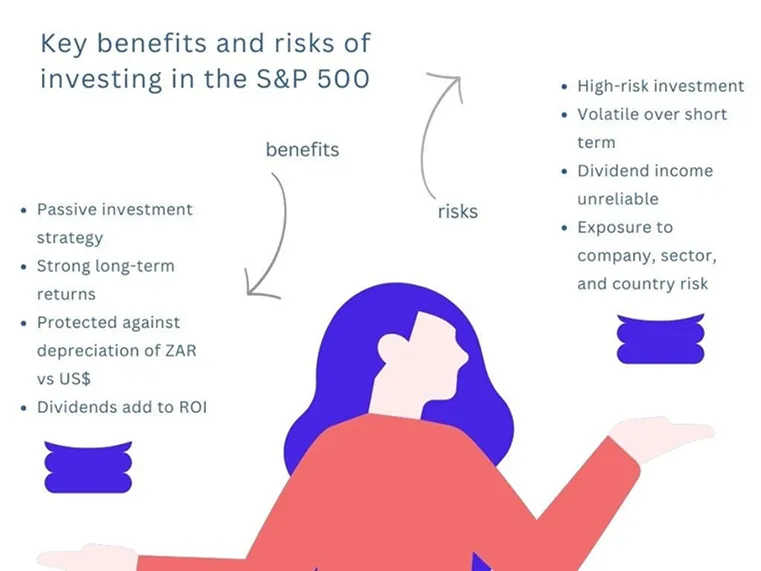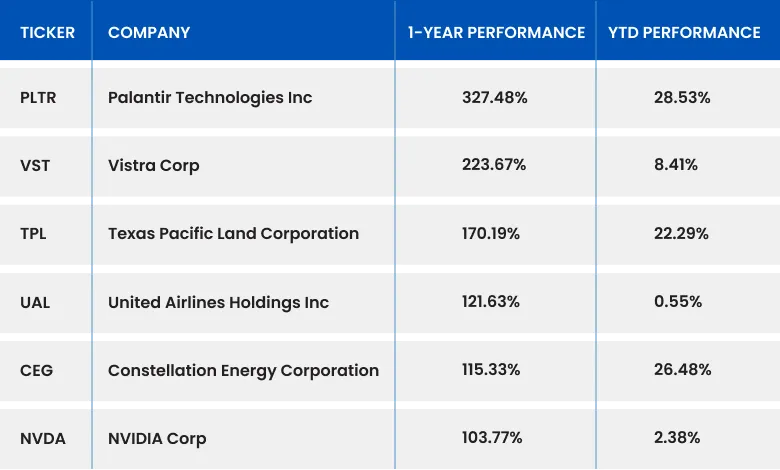

How to Invest in the S&P 500 for Beginners: A Step-by-Step Guide to Purchasing SPY
Learning to invest in the S&P 500 is a fundamental strategy for many traders aiming to grow their capital over the long term. This detailed guide provides an in-depth analysis of the S&P 500, outlines the advantages and risks involved in trading this key index, and explores the different ways to gain exposure to it through CFDs and other financial instruments.
What is the S&P 500?
The S&P 500, or Standard & & Poor's 500, is a stock market index that tracks the performance of 500 of the largest publicly traded companies in the United States. Established in 1957, it serves as a benchmark for the overall health of the U.S. economy and is widely regarded as the premier gauge of large-cap U.S. equities.
Composition and Weighting
The S&P 500 is weighted by market capitalization, meaning each company's impact on the index corresponds to its market value. Larger corporations such as Apple, Microsoft, and Amazon have a significantly greater influence on the index's performance compared to smaller firms. This weighting methodology reflects the actual market impact of these major entities on the broader economy.
Sector Representation
The index covers multiple sectors, including technology, healthcare, financials, consumer discretionary, and industrials, offering a comprehensive overview of the U.S. economy. This sector diversification helps reduce the impact of downturns within any single industry.

Figure 1: S&P 500 stock image
Why Invest in the S&P 500?
Benefits of Investing in the S&P 500
Historical Performance
Since its inception in 1957, the S&P 500 has generated an average annual return of approximately 10%, making it an appealing choice for long-term investors seeking steady growth. While past performance does not guarantee future results, the index’s historical track record highlights its resilience over time.
Diversification
Investing in the S&P 500 offers exposure to 500 leading companies across diverse sectors, thereby reducing the risk associated with individual stock holdings. This inherent diversification helps smooth out market volatility and sector-specific downturns.
Lower Risk Profile
The broad composition of the S&P 500 reduces vulnerability to declines in any single stock or sector. This diversity mitigates volatility and promotes more stable returns over time, offering a safer investment alternative compared to concentrated equity portfolios.
Accessibility
Investors can easily access the S&P 500 through Exchange-Traded Funds (ETFs) and index funds, which typically feature low fees and no high minimum investment thresholds. This accessibility makes it suitable for both novice and seasoned investors.
Ideal for Passive Investing
The S&P 500 is ideal for passive investors who prefer a hands-off approach. Unlike active stock selection, investing in the index requires minimal management and market timing, enabling investors to focus on long-term growth without frequent trading decisions.
 Figure 2: Benefits & risks of investing in the S&P 500
Figure 2: Benefits & risks of investing in the S&P 500
Risks of Investing in the S&P 500
While the S&P 500 presents lower risk compared to individual stocks, it is not without challenges:
Systematic Risk
Investors in the S&P 500 remain exposed to broad market risks such as inflation, interest rate fluctuations, and geopolitical events that affect the entire economy. These factors can trigger market-wide declines irrespective of individual company performance.
Market Volatility
The index can experience significant short-term volatility, particularly during market corrections or bear markets. Investors should be prepared for periods of increased price fluctuations that may impact portfolio value.
Limited Diversification
The S&P 500 includes only large-cap U.S. equities, lacking exposure to mid-cap and small-cap stocks, international markets, and other asset classes such as bonds or commodities. This limitation can affect portfolio resilience under varying market conditions.
Concentration Issues
Due to its market-cap weighting, a small number of leading companies or sectors can disproportionately influence the index's performance. This concentration risk can increase volatility if those dominant stocks experience downturns.
Inflation Impact
Over time, inflation reduces the purchasing power of investment returns. During periods of low market performance, inflationary pressures can further diminish real gains, affecting long-term investment growth.
Investors should consider these risks when allocating funds to the S&P 500 and explore diversification strategies to mitigate potential downsides.
How to Invest in the S&P 500
It's important to note that you cannot directly invest in the S&P 500 index. Instead, there are several ways to gain exposure to it:
1. Open a Brokerage Account
The first step to investing in the S&P 500 is to open a brokerage account. This account enables you to trade financial instruments such as ETFs, stocks, and mutual funds. Many reputable brokers offer commission-free ETF trading and low minimum deposits, making it accessible for beginners.
2. Fund Your Account
After opening your brokerage account, transfer funds from your bank account. Your initial investment should align with your financial objectives and risk tolerance. Many platforms allow starting with as little as $100; some also offer fractional shares, enabling investment with smaller amounts.
 Figure 3: S&P 500 portfolio
Figure 3: S&P 500 portfolio
3. Choose Your Investment Method
There are three main ways to invest in the S&P 500:
S&P 500 Index Funds
S&P 500 index funds are mutual funds designed to replicate the index's performance. Unlike stocks, these funds trade once per day at the closing net asset value (NAV). They typically offer low expense ratios, providing a cost-efficient way to gain market exposure.
Many index funds also offer automatic dividend reinvestment, enabling compounding returns over time. However, some funds may have minimum investment thresholds to consider before purchasing.
S&P 500 ETFs (Exchange-Traded Funds)
ETFs track the S&P 500 but trade like individual stocks, allowing buying and selling throughout the trading day. This flexibility appeals to investors seeking intraday trading opportunities.
ETFs generally have low expense ratios and no minimum investment beyond the price of one share (or fractional shares if available). Popular examples include the SPDR S&P 500 ETF Trust (SPY), one of the most actively traded funds worldwide.
Investing in Individual Stocks
Alternatively, investors can purchase individual stocks within the S&P 500. This approach requires thorough research and ongoing monitoring to identify strong performers. Achieving adequate diversification with individual stocks demands substantial capital and active portfolio management to mitigate risk.
For most investors, especially beginners, index funds and ETFs offer the simplest and most cost-effective means to invest in the S&P 500, providing broad market exposure with minimal effort.
4. Determine Your Investment Strategy
Before investing in the S&P 500, it is essential to decide whether you prefer a long-term buy-and-hold approach or a more active trading strategy.
Long-Term Investing
A long-term strategy involves holding S&P 500 investments for years or decades, focusing on steady growth rather than short-term price fluctuations. Many long-term investors employ dollar-cost averaging (DCA)—investing fixed amounts at regular intervals—to reduce volatility impact and avoid market timing risks. This method suits investors seeking consistent returns with minimal active management.
Active Trading
Active trading involves frequent buying and selling to capitalize on short-term price movements. This strategy requires close market monitoring, technical analysis skills, and a strong grasp of market trends. Due to higher risk and transaction costs, it is generally better suited for experienced investors who can manage short-term volatility effectively.
For beginners, a long-term approach using dollar-cost averaging is often the most prudent entry point, providing market exposure while mitigating short-term volatility.
 Figure 4: S&P 500 investment return
Figure 4: S&P 500 investment return
5. Build a Market Assumption
Before investing, develop a market hypothesis based on available analysis and data. This assumption guides your investment decisions and overall strategy.
To formulate a robust market assumption, consider:
Technical Analysis: Analyze price charts, historical trends, and patterns to forecast potential market movements.
Fundamental Analysis: Evaluate economic indicators, corporate earnings, and financial statements to assess market strength and investment opportunities.
External Factors: Consider geopolitical events, industry developments, and central bank policies, as these influence market dynamics.
A well-founded market assumption provides clarity and direction for your investments. However, since markets evolve, regularly update your assumptions as new information and trends emerge.
6. Execute Your Investment
Once you have selected your investment vehicle, proceed to place your trade:
For ETFs: Enter the ticker symbol (e.g., SPY) and specify the dollar amount or number of shares to purchase.
For Index Funds: Place a purchase order, executed at the end of the trading day at the fund’s net asset value (NAV).
For Individual Stocks: Research and select specific S&P 500 companies that align with your investment goals and risk profile.
Monitor Your Investment
Monitoring frequency depends on your strategy:
Long-term investors may review portfolios quarterly or annually to ensure alignment with financial objectives.
Active traders should monitor positions daily or weekly to respond to short-term price changes and manage risk.
While staying informed on market trends and economic news is vital, it is important to avoid emotional reactions to short-term volatility.
Plan Your Exit Strategy
A defined exit plan is essential for long-term success:
For long-term investors, the objective may be to hold investments until retirement or a financial goal is reached.
For active traders, implementing stop-loss orders to limit losses and take-profit orders to secure gains promotes disciplined risk management.
Predefined exit points help eliminate emotional bias and protect capital from unnecessary risk.
Review and Refine Your Strategy
Regularly evaluating your investment performance is crucial for sustained success:
Assess whether your investments meet your financial goals.
Rebalance your portfolio if the S&P 500 allocation becomes disproportionately large relative to other assets.
Adjust your strategy in response to changes in financial circumstances or market conditions.
By periodically refining your approach, you can maintain alignment with your investment objectives while adapting to evolving market environments.
S&P 500 Investment Performance
To gauge the potential of S&P 500 investments, consider the performance of some top-performing stocks in the index as of February 2025:

While these individual stocks show strong returns, it is important to remember that the S&P 500 provides more stable, diversified exposure to the U.S. equity market.
Considerations for 2025 Investors
How should you plan your S&P 500 investment strategy in 2025? Keep these factors in mind:
Expense Ratios: Compare expense ratios across S&P 500 funds, as small differences can significantly affect long-term returns.
Broader Diversification: To build a balanced portfolio, consider supplementing your S&P 500 holdings with mid-cap and small-cap stocks, international equities, and fixed-income assets.
Market Timing Concerns: Many experts advise against overemphasizing market entry timing. The market's long-term trend rewards consistent investors regardless of timing.
Concentration Risk: The S&P 500’s market-cap weighting means a few large companies can heavily influence index performance. In 2025, technology stocks may have an outsized impact on returns.
Tax Considerations: When investing outside tax-advantaged accounts, be
aware of tax implications related to dividends and capital gains from your S&P 500 investments.
Is Investing in the S&P 500 Right for You?
Many new and experienced investors ask how to invest in the S&P 500 to gain long-term market exposure. As one of the most reliable and diversified investment options, the S&P 500 offers an accessible way to build wealth through passive investing.
For most investors, especially beginners, starting with a low-cost S&P 500 index fund or ETF and adopting a disciplined, long-term investment approach is the most straightforward path to financial success. By understanding the benefits and limitations of S&P 500 investing, you can make informed decisions aligned with your unique financial goals and risk tolerance.
Free Trading Courses and Resources
Success in trading requires skill, knowledge, and practice. TMGM offers free courses and webinars to support traders at all experience levels. Test your strategies risk-free with a demo account funded with US$100,000 in virtual capital before trading live.
Trade Smarter Today






Account
Account
Instantly



